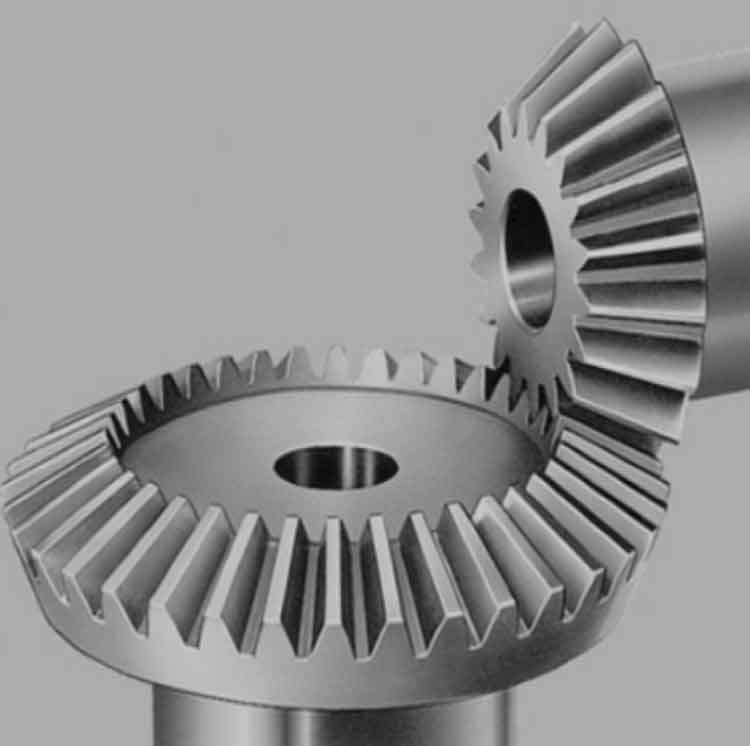In this article, the dynamic characteristics of a straight bevel gear system with backlash are thoroughly investigated. Tables and images are utilized to summarize and illustrate the key findings, enhancing the readability and attractiveness of the content. Below is a detailed summary of the research.

Abstract
To study the amplitude jump and tooth surface impact characteristics of a straight bevel gear transmission system with backlash, the harmonic balance method is employed to establish the system’s dynamic equations. The parameter solution domain boundary structure is obtained using the Broyden quasi-Newtonian method and the quasi-arc-length continuation algorithm. The sensitivity of amplitude jumping, multi-value solutions, and meshing impact characteristics to parameters is explored.
Keywords: vibration and wave; straight bevel gear system; harmonic balance method; solution domain structure; nonlinear jumping; tooth surface impact
1. Introduction
The main factors causing nonlinear characteristics such as amplitude jumping, multi-value solutions, and meshing impacts in gear transmission systems are backlash and time-varying stiffness. The harmonic balance method is one of the primary methods for studying the dynamic response of nonlinear systems.
2. Methodology
2.1 Dynamic Equation Establishment
The dynamic equations of the 7-degree-of-freedom single-stage straight bevel gear system are established using the harmonic balance method.
2.2 Harmonic Balance Equations
The harmonic balance equations are presented in matrix form as follows:
Where Gm, Gc, Gs, Km, Ks, C, M, Fm, Fc, and Fs represent different system matrices and vectors.
2.3 Solution Method
The Broyden-2 quasi-Newtonian method and the quasi-arc-length continuation algorithm are used to solve the nonlinear equations and obtain the amplitude jump, multi-value solution characteristics, and global solution curves.
3. Results and Discussion
3.1 System Dynamic Characteristics
The nonlinear jumping and multi-value solution characteristics of the bevel gear transmission system’s meshing amplitude λa within the speed range Ω∈[0.3,1.5] are shown in Table 1.
Table 1: Summary of Dynamic Characteristics
| Parameter | Description | Value/Range |
|---|---|---|
| Ω | Rotational speed | 0.3 to 1.5 |
| λa | Meshing amplitude | Varies with Ω |
| Jump zones | Amplitude jump intervals | [0.5575, 0.6325] and [1.220, 1.233] |
| Resonance | Primary resonance zones | Meshing frequency Ω=0.68 and shaft frequency (Ω=1.240, repeated frequency) |
3.2 Sensitivity Analysis
The sensitivity of amplitude jumping to system parameters such as backlash b, time-varying meshing stiffness coefficient a, static error fe, and load coefficient fpm is analyzed. The results are summarized in Table 2 and illustrated.
Table 2: Sensitivity Analysis Results
| Parameter | Effect on Amplitude Jumping |
|---|---|
| b (backlash) | Increases with gap, jumping zone expands at meshing frequency, stable after b>0.3 |
| a (time-varying stiffness) | Increases with a, jumping gradually weakens and transitions to weak linearity at shaft frequency |
| fe (static error) | Increases with fe, jumping intensifies at both meshing and shaft frequencies |
| fpm (load) | Increases with fpm, jumping and softening weaken, showing weak linear characteristics |
3.3 Tooth Surface Impact Analysis
The tooth surface impact is analyzed in conjunction with nonlinear jumping to investigate the coupling mechanism. The tooth surface impact characteristics are determined using the maximum and minimum displacement (λm±λa). The results are summarized in Table 3 .
Table 3: Tooth Surface Impact Characteristics
| Impact State | Description |
|---|---|
| I=0 | No impact |
| I=1 | Single-sided impact |
| I=2 | Double-sided impact |
3.4 n/I Characteristic Analysis in the Two-parameter Plane
The n/I characteristic parameter solution domain boundary planes are constructed for parameters b, a, fe, and fpm with frequency Ω. The results are summarized in Table 4 .
Table 4: n/I Characteristic Analysis
| Parameter Plane | Main Characteristics |
|---|---|
| Ω×b | Mainly 1/0 characteristics in non-resonance zones, complex transitions in resonance zones, stabilizing with increasing b |
| Ω×a | Resonance zones shrink with increasing a, jumping and impacts weaken |
| Ω×fe | Resonance zones expand and shift to lower frequencies with increasing fe, showing softening trend |
| Ω×fpm | Resonance zones shift to higher frequencies with increasing fpm, showing transition to weak linearity |
4. Conclusion
Based on the harmonic balance method, the amplitude-frequency response dynamic model of the straight bevel gear system is established. The global multi-value solutions and amplitude jump responses of the system are obtained through numerical methods. The following conclusions are drawn:
- In the primary resonance zones, all parameters exhibit amplitude jumping and stiffness softening phenomena. The amplitude jumping intensity is higher in the meshing frequency resonance zone.
- In the Ω×b, Ω×a, Ω×fe, and Ω×fpm parameter planes, the n/I characteristics exhibit complex transitions. Small backlashes result in double-sided impacts and multi-value solutions, while the system stabilizes when b>0.98.
This research provides data support for the structural parameter design of bevel gear systems, enhancing the reliability and safety of gear equipment operation.
